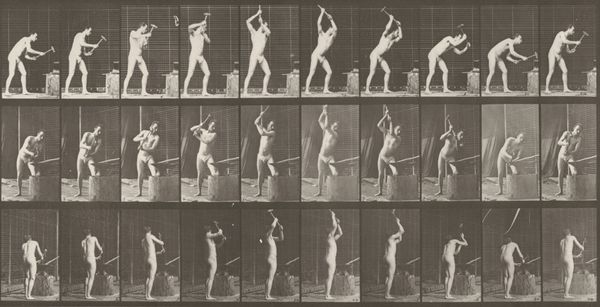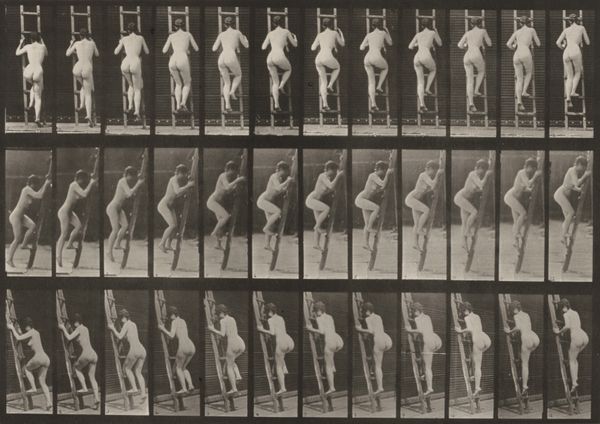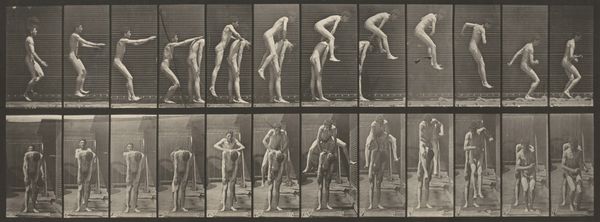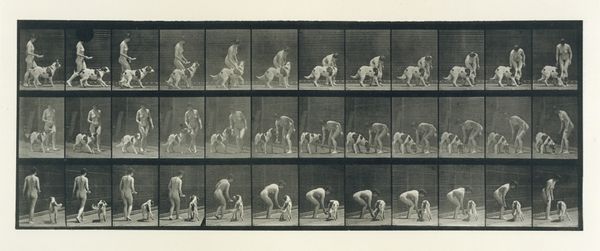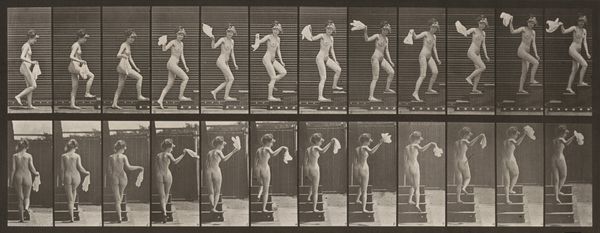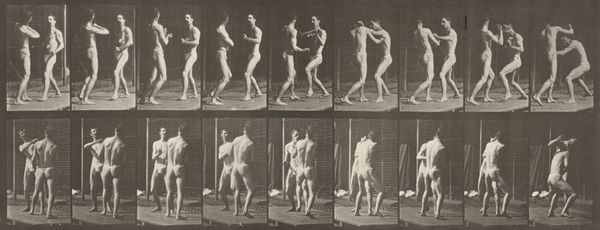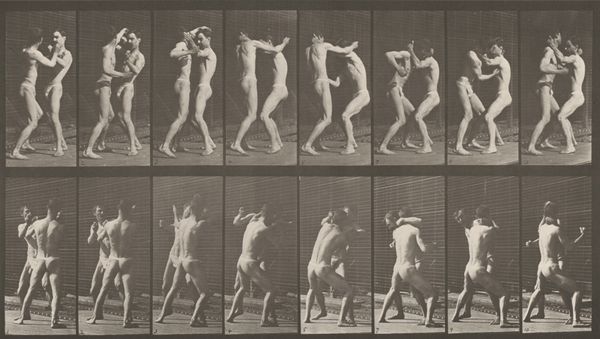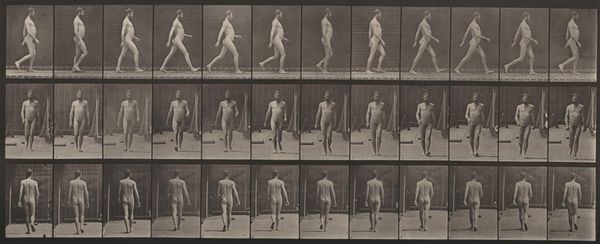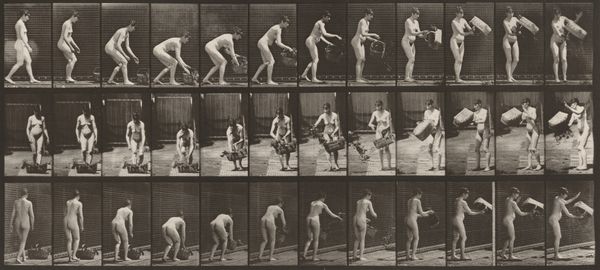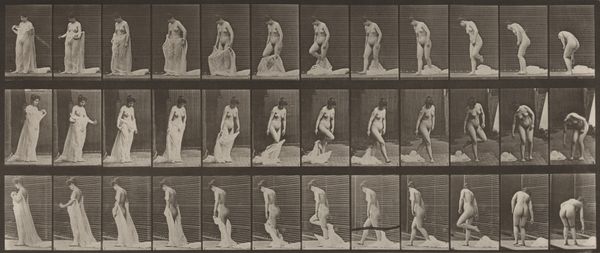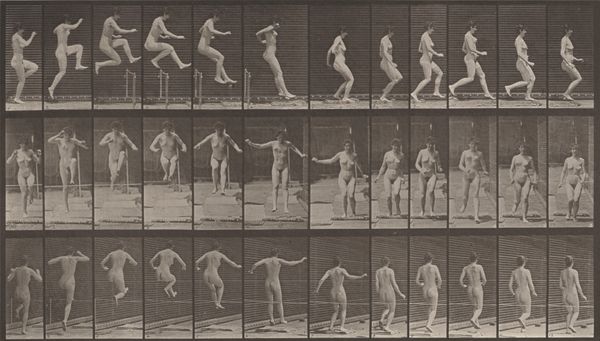
Plate Number 408. Two models, 1 pouring bucket of water over 8 1887
0:00
0:00
print, photography, gelatin-silver-print
#
action-painting
# print
#
photography
#
gelatin-silver-print
#
history-painting
#
nude
Dimensions: image: 18.9 × 41 cm (7 7/16 × 16 1/8 in.) sheet: 47 × 60.2 cm (18 1/2 × 23 11/16 in.)
Copyright: National Gallery of Art: CC0 1.0
Curator: I’m immediately struck by the sense of play here— almost a mischievous energy. It’s like watching a secret ritual, these figures captured mid-splatter. Editor: This is Plate 408 from Eadweard Muybridge's "Animal Locomotion," a gelatin silver print made in 1887. We see a sequence of images capturing two nude models interacting with water— one seemingly pouring water over the other from a height. Curator: Animal Locomotion. So, the figures become almost… specimens? I can’t help feeling that’s dehumanizing. Editor: Well, the project was largely funded by the University of Pennsylvania, meant to investigate and document aspects of animal and human movement for scientific study. The reduction to discrete frames does risk objectification, especially considering the prevailing societal norms regarding the representation of the nude figure at the time. Muybridge’s work highlights that intersection of science, art, and social perception. Curator: It is technically marvelous, though, isn’t it? He really did pioneer a way of seeing movement. Imagine before this, those split-second actions simply didn’t exist in the public consciousness in quite the same way. What are the models feeling, do you suppose? A fleeting cool splash, or self-consciousness? Is it meant to titillate? Inform? The neutral backdrop really offers up a clinical, sterile vision to that end. Editor: Exactly. These images contributed to both artistic and scientific understanding, providing reference material for painters and sculptors eager to capture accurate anatomy and movement. Think about how Edgar Degas' paintings or Rodin's sculptures owe a debt to works like these. It is history. Curator: And how fascinating it is to remember what "shocking" looks like as time rolls by. It becomes historical evidence. To look at the human in motion frozen within the mechanical frame, an aesthetic wonder even now! Editor: Yes, Muybridge leaves us pondering how perception and cultural attitudes affect how we value something for its artistic expression, its factual accuracy, or both. Thank you for joining me as we reflect on that!
Comments
No comments
Be the first to comment and join the conversation on the ultimate creative platform.

